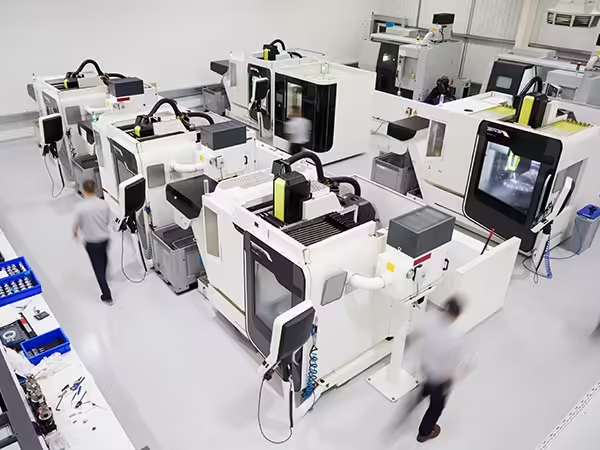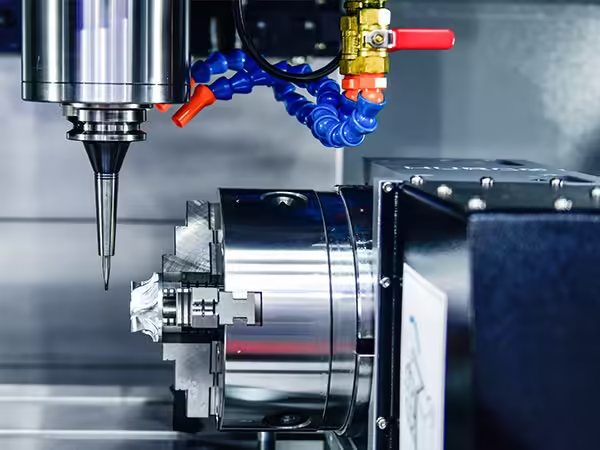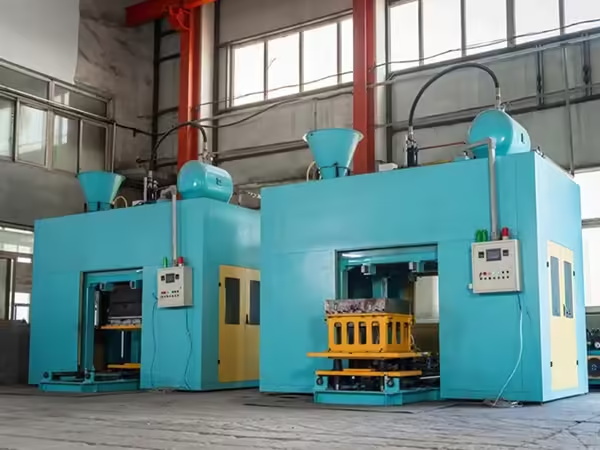6 Fehler bei Kugelhahnzubehör, die Sie vermeiden sollten
Willkommen auf meinem Blog!
Ich freue mich sehr, dass du hier bist! Bevor wir uns in die Inhalte vertiefen, würde ich mich freuen, wenn du mir auf meinen Social-Media-Plattformen folgst. Dort teile ich zusätzliche Einblicke, vernetze mich mit unserer großartigen Community und halte dich über die neuesten Nachrichten auf dem Laufenden. So bleibst du in Verbindung:
📘 Facebook: Shanghai Leierwo Industriehandel Co., Ltd.
Lassen Sie uns gemeinsam auf diese Reise gehen! Ich hoffe, Sie finden die Inhalte hier nicht nur aufschlussreich, sondern auch inspirierend und wertvoll. Los geht‘s!
Inhaltsverzeichnis
Einführung

In der Welt der Flüssigkeitssteuerung spielen Kugelhähne eine entscheidende Rolle für einen reibungslosen und effizienten Betrieb. Von Industrieanlagen bis hin zu Sanitärinstallationen in Wohngebäuden sind diese vielseitigen Komponenten oft die Lösung für die Durchflussregulierung. Ein oft übersehener Aspekt bei der Installation und Wartung von Ventilen ist jedoch der Einsatz von Kugelhahnzubehör. Diese Zubehörteile mögen unbedeutend erscheinen, aber ihr Einfluss auf die Systemleistung, Langlebigkeit und Sicherheit ist enorm.
Leider machen viele Benutzer vermeidbare Fehler bei der Auswahl, Installation oder Wartung KugelhahnzubehörSolche Versäumnisse können zu Leckagen, Leistungseinbußen, Geräteausfällen oder sogar gefährlichen Situationen in komplexeren Systemen führen. In diesem Artikel beleuchten wir sechs häufige Fehler bei der Verwendung dieses Zubehörs. Dabei untersuchen wir, wie sich jeder Fehler negativ auf Ihren Betrieb auswirken kann und welche Schritte Sie unternehmen können, um sie zu vermeiden.
Egal, ob Sie Anlageningenieur, Wartungstechniker oder einfach jemand sind, der sich für Flüssigkeitssteuerungssysteme interessiert, dieser Leitfaden bietet wertvolle Einblicke in die Optimierung der Leistung Ihres Systems durch eine bessere Nutzung von Kugelhahnzubehör.
Fehler 1: Verwendung inkompatibler Kugelhahnzubehör
Warum Kompatibilität wichtig ist
Einer der häufigsten und kostspieligsten Fehler im Umgang mit Kugelhahnzubehör ist die Verwendung inkompatibler Teile. Zubehör wie Antriebe, Griffe, Verriegelungsvorrichtungen, Verlängerungssätze oder Spindeldichtungen müssen der Größe, Druckstufe und Materialspezifikation des Ventils entsprechen. Nicht passende Komponenten können eine Vielzahl von Problemen verursachen, darunter mechanische Ausfälle, ineffiziente Durchflussregelung oder sogar gefährliche Systemlecks.
Materialverträglichkeit
Die Materialverträglichkeit ist besonders wichtig bei der Arbeit in speziellen Umgebungen wie chemischen Verarbeitungsanlagen oder Hochdrucksystemen. Beispielsweise kann die Verwendung von Aluminiumzubehör an Edelstahlventilen mit der Zeit zu galvanischer Korrosion führen. Ebenso können Gummidichtungen in Hochtemperaturumgebungen schnell verschleißen und zu Ausfällen führen.
Druck- und Temperaturwerte
Jedes Zubehör unterliegt Einschränkungen hinsichtlich Betriebsdruck und -temperatur. Beachten Sie stets die Produktdatenblätter und stellen Sie sicher, dass das Zubehör den Betriebsparametern des Kugelhahns entspricht.
Fehler 2: Übersehen der richtigen Installationstechniken
Die Bedeutung der korrekten Montage
Eine unsachgemäße Installation ist ein weiteres häufiges Problem, wenn es um KugelhahnzubehörZubehör wie Stellantriebe, Endschalter und Positionsanzeigen erfordern eine präzise Ausrichtung und sichere Befestigung. Die Nichtbeachtung der Installationsrichtlinien kann zu einer schlechten Ventilreaktion, Betriebsschwierigkeiten und potenziellen Sicherheitsrisiken führen.
Häufige Installationsfehler
- Zu festes Anziehen der Befestigungselemente: Dies kann zu Beschädigungen der Montagehalterungen oder Verformungen der Ventilkörper führen.
- Ignorieren der Herstelleranweisungen: Für jedes Zubehör sind möglicherweise bestimmte Installationsschritte erforderlich, die eine optimale Leistung gewährleisten.
- Falsche Ausrichtung: Eine Fehlausrichtung des Zubehörs kann dazu führen, dass das Ventil nicht vollständig geöffnet oder geschlossen wird.
Schulung und Dokumentation
Eine proaktive Möglichkeit, diese Probleme zu vermeiden, besteht darin, Ihr Installationsteam angemessen zu schulen und ihm eine ausführliche Dokumentation bereitzustellen. Die meisten namhaften Hersteller bieten umfassende Handbücher und Supportmaterialien für ihr Kugelhahnzubehör an.
Fehler 3: Die regelmäßige Wartung des Zubehörs überspringen
Warum auch Zubehör Aufmerksamkeit braucht
Während sich viele Wartungsprogramme auf die Ventile selbst konzentrieren, wird das Zubehör oft vernachlässigt. Kugelhahnzubehör wie Getriebeantriebe, Verlängerungsgriffe und Vorbauschutze unterliegen einem Verschleiß und müssen regelmäßig überprüft werden.
Folgen der Vernachlässigung
Mangelnde Wartung des Zubehörs kann zu Folgendem führen:
- Reduzierte Lebensdauer der gesamten Ventilbaugruppe
- Ungenaue Ventilpositionierung
- Erhöhte Drehmomentanforderungen
- Höheres Leckagerisiko
Wartungsempfehlungen
| Zubehörtyp | Wartungshäufigkeit | Häufige Probleme | Empfohlene Maßnahmen |
|---|---|---|---|
| Manuelle Griffe | Monatlich | Lockerung, Korrosion | Schrauben festziehen, Fett auftragen |
| Pneumatische Antriebe | Vierteljährlich | Luftlecks, träge Bewegung | Dichtungen prüfen, Funktion testen |
| Endschalter | Halbjährlich | Falsche Signale | Schaltkreise prüfen, verschlissene Teile ersetzen |
| Schließvorrichtungen | Monatlich | Rost, Verformung | Reinigen, schmieren, Funktion prüfen |
| Erweiterungskits | Alle 6 Monate | Fehlausrichtung, Steifheit | Armaturen einstellen, Buchsen ersetzen |
Regelmäßige Wartung gewährleistet nicht nur eine gleichbleibende Leistung, sondern verlängert auch die Lebensdauer der Ventile und ihres Zubehörs.
Fehler 4: Auswahl des Zubehörs ohne Berücksichtigung der Umgebungsbedingungen

Umweltverträglichkeit ist entscheidend
Eine weitere Gefahr bei der Auswahl von Kugelhahnzubehör besteht darin, die Umgebung, in der das Ventil betrieben wird, zu vernachlässigen. Von extremer Hitze über ätzende Chemikalien bis hin zum Wetter im Freien müssen Umweltfaktoren berücksichtigt werden.
Beispiele für Umweltinkongruenz
- Für den Innenbereich zugelassene Stellantriebe, die im Außenbereich installiert sind kann aufgrund von Feuchtigkeit und UV-Einwirkung zu vorzeitigem Ausfall führen.
- Nicht abgedichtete Endschalter Der Einsatz in staubigen Umgebungen kann zu Betriebsfehlern führen.
- Metallgriffe ohne Isolierung Der Einsatz in Anwendungen mit hoher Hitze kann bei manueller Bedienung zu Verbrennungen führen.
Bewährte Methoden
Stellen Sie sich bei der Auswahl von Kugelhahnzubehör immer die folgenden Schlüsselfragen:
- Ist das Zubehör für den Einsatz im Freien geeignet?
- Hält es Chemikalien oder hoher Luftfeuchtigkeit stand?
- Verfügt es über Schutzbeschichtungen oder Gehäuse für raue Umgebungen?
Durch fundierte Entscheidungen auf der Grundlage Ihrer Umgebung wird die Betriebszuverlässigkeit gewährleistet und die Wahrscheinlichkeit unerwarteter Ausfälle verringert.
Fehler 5: Die Rolle der Automatisierung bei Ventilzubehör wird ignoriert
Automatisierungsintegration ist wichtig
Mit der Weiterentwicklung der Industrie ist die Automatisierung zu einer Schlüsselkomponente in vielen Systemen geworden. Dennoch verlassen sich einige Benutzer weiterhin auf veraltetes oder manuelles Zubehör, selbst wenn automatisierte Alternativen verfügbar sind. Wenn Sie Ihre Kugelhahnzubehör kann die Leistung einschränken und die Gesamteffizienz des Systems verringern.
Automatisierungsoptionen
Zubehör wie elektrische Antriebe, pneumatische Steuerungen und intelligente Positionsanzeigen können zur Echtzeitüberwachung und Fernsteuerung in Steuerungssysteme integriert werden.
Vorteile von automatisierungsbereitem Zubehör
- Verbesserte Genauigkeit bei der Durchflussregulierung
- Erhöhte Systemsicherheit durch Rückmeldesignale
- Weniger menschliche Fehler
- Optimierte Wartung durch Diagnose
Upgrade-Strategie
Wenn Sie eine Automatisierung in Erwägung ziehen, prüfen Sie Ihre vorhandenen Kugelhähne und ermitteln Sie kompatibles Automatisierungszubehör. Viele Anbieter bieten Nachrüstsätze an, mit denen Sie ein Upgrade durchführen können, ohne die gesamte Ventilbaugruppe austauschen zu müssen.
Fehler 6: Kauf von minderwertiger Qualität oder Generika Kugelhahnzubehör

Preis vs. Leistung
Die Versuchung, durch den Kauf von generischem oder minderwertigem Kugelhahnzubehör Kosten zu sparen, kann langfristig zu erheblichen Verlusten führen. Diese günstigeren Alternativen sind oft nicht ausreichend getestet, dokumentiert und weisen keine Haltbarkeit unter realen Bedingungen auf.
Versteckte Kosten
Was als budgetfreundliche Entscheidung erscheint, kann schnell zu Folgendem führen:
- Höhere Wartungskosten
- Unerwartete Ausfallzeiten
- Häufiger Austausch
- Sicherheitsrisiken
So erkennen Sie hochwertiges Zubehör
- Achten Sie auf die Einhaltung von Industriestandards (z. B. ISO, ANSI)
- Leistungszertifizierungen prüfen
- Wählen Sie Zubehör mit umfassenden Garantien und technischem Support
Qualität Kugelhahnzubehör Sie sind zwar zunächst teurer, bieten aber im Laufe der Zeit eine bessere Leistung, verringern Risiken und senken die Gesamtbetriebskosten.
Abschluss
Kugelhahnzubehör sind mehr als nur optionale Ergänzungen – sie sind wichtige Komponenten, die sich direkt auf die Systemleistung, Zuverlässigkeit und Sicherheit auswirken. Von der Materialverträglichkeit über die ordnungsgemäße Wartung bis hin zur Automatisierungsbereitschaft spielt jeder Aspekt der Auswahl und Verwaltung dieser Zubehörteile eine entscheidende Rolle.
Wenn Sie die sechs häufigsten Fehler verstehen, die in diesem Artikel behandelt werden – Verwendung inkompatibler Teile, schlechte Installation, mangelnde Wartung, Ignorieren von Umweltfaktoren, Vernachlässigung der Automatisierung und Entscheidung für minderwertiges Zubehör – können Sie die Lebensdauer und Effizienz Ihrer Ventilsysteme erheblich verbessern.
Wenn Sie Zeit und Ressourcen in die Auswahl des richtigen Kugelhahnzubehörs und dessen korrekte Verwendung investieren, verbessern Sie nicht nur die Betriebsergebnisse, sondern senken auch langfristig die Kosten und den Wartungsaufwand.
Häufig gestellte Fragen
Welches sind die gängigsten Kugelhahnzubehörteile?
Zu den gängigen Zubehörteilen gehören Antriebe (elektrisch oder pneumatisch), Handgriffe, Verriegelungsvorrichtungen, Spindelverlängerungen, Endschalter und Positionsanzeigen. Diese tragen zur Verbesserung der Steuerung, Sicherheit und Automatisierung des Kugelhahns bei.
Wie oft sollte Kugelhahnzubehör gewartet werden?
Dies hängt von der Art des Zubehörs und der Umgebung ab, in der es verwendet wird. Im Allgemeinen liegen die Wartungsintervalle zwischen monatlich für manuelle Komponenten und halbjährlich für elektrisches Zubehör.
Kann ich Kugelhahnzubehör von verschiedenen Marken?
Es wird empfohlen, kompatibles Zubehör vom gleichen Hersteller zu verwenden, um die richtige Passform und Funktion zu gewährleisten. Überprüfen Sie immer die Datenblätter auf Kompatibilität.
Sind alle Kugelhahnzubehörteile für Hochdrucksysteme geeignet?
Nicht alle Zubehörteile sind für Hochdruckumgebungen geeignet. Stellen Sie sicher, dass jede Komponente den Druck- und Temperaturanforderungen Ihres Systems entspricht, um Ausfälle zu vermeiden.
Wie kann ich das Leben meiner Kugelhahnzubehör?
Wählen Sie hochwertiges Zubehör, installieren Sie es richtig, führen Sie regelmäßige Wartungsarbeiten durch und stellen Sie sicher, dass es für die Betriebs- und Umgebungsbedingungen Ihres Systems geeignet ist.
Produktkategorien
- Ventilteile
- Wasserpumpenteile
- Lagergehäuseteile
- Druckgussteile
- Pumpenprodukte aus Edelstahl
- Pumpenprodukte aus Gusseisen
- Ventilteile für den Automobilgebrauch
- Autoteile
- Ventilteile für den zivilen Gebrauch
- Vakuumpumpenteile KF

